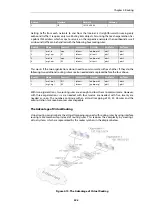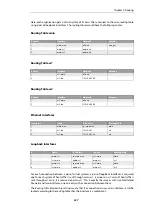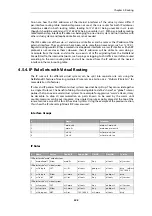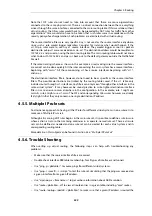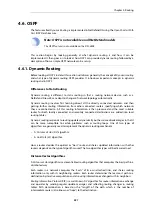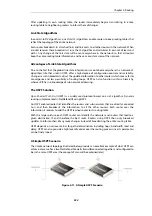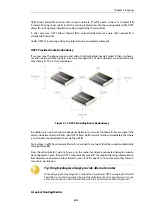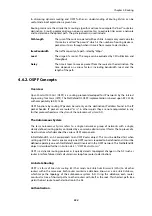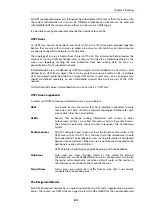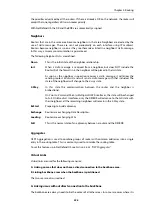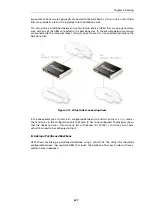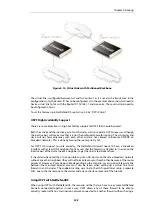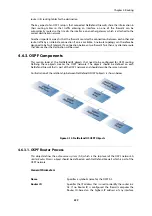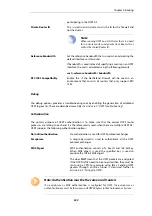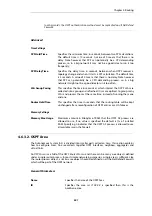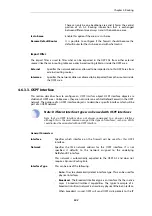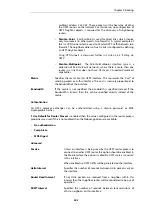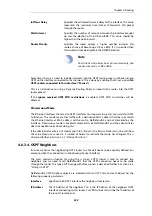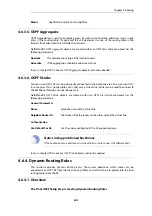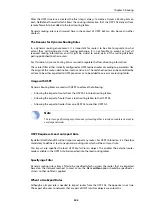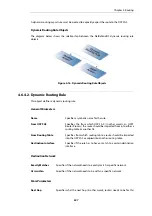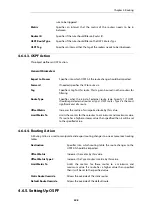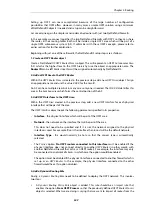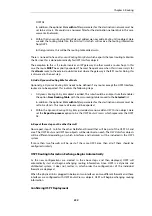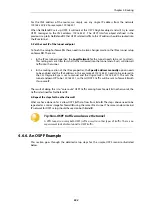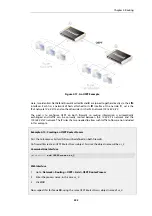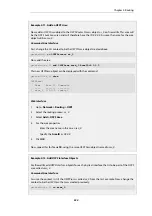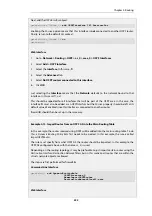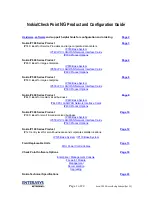
participating in the OSPF AS.
Private Router ID
This is used in an HA cluster and is the ID for this firewall and
not the cluster.
Note
When running OSPF on a HA Cluster there is a need
for a private master and private slave Router ID as
well as the shared Router ID.
Reference Bandwidth
Set the reference bandwidth that is used when calculating the
default interface cost for routes.
If bandwidth is used instead of specifying a metric on an OSPF
Interface, the cost is calculated using the following formula:
cost = reference bandwidth / bandwidth
RFC 1583 Compatibility
Enable this if the NetDefend Firewall will be used in an
environment that consists of routers that only support RFC
1583.
Debug
The debug options provides a troubleshooting tool by enabling the generation of additional
OSPF log events. These are described more fully in
Section 4.6.7, “OSPF Troubleshooting”
Authentication
The primary purpose of OSPF authentication is to make sure that the correct OSPF router
processes are talking to each and it is therefore mostly used when there are multiple OSPF AS'.
OSPF supports the following authentication options:
No (null) authentication
No authentication is used for OSPF protocol exchanges.
Passphrase
A simple password is used to authenticate all the OSPF
protocol exchanges.
MD5 Digest
MD5 authentication consists of a key ID and 128-bit key.
When MD5 digest is used the specified key is used to
produce the 128-bit MD5 digest.
This does NOT mean that the OSPF packets are encrypted.
If the OSPF traffic needs to be encrypted then they must be
sent using a VPN. For example, using IPsec. Sending OSPF
packets through an IPsec tunnel is discussed further in
Section 4.6.5, “Setting Up OSPF”
.
Note: Authentication must be the same on all routers
If a passphrase or MD5 authentication is configured for OSPF, the passphrase or
authentication key must be the same on all OSPF Routers in that Autonomous System.
Chapter 4: Routing
340
Summary of Contents for NetDefendOS
Page 30: ...Figure 1 3 Packet Flow Schematic Part III Chapter 1 NetDefendOS Overview 30 ...
Page 32: ...Chapter 1 NetDefendOS Overview 32 ...
Page 144: ...Chapter 2 Management and Maintenance 144 ...
Page 284: ...Chapter 3 Fundamentals 284 ...
Page 392: ...Chapter 4 Routing 392 ...
Page 419: ... Host 2001 DB8 1 MAC 00 90 12 13 14 15 5 Click OK Chapter 5 DHCP Services 419 ...
Page 420: ...Chapter 5 DHCP Services 420 ...
Page 573: ...Chapter 6 Security Mechanisms 573 ...
Page 607: ...Chapter 7 Address Translation 607 ...
Page 666: ...Chapter 8 User Authentication 666 ...
Page 775: ...Chapter 9 VPN 775 ...
Page 819: ...Chapter 10 Traffic Management 819 ...
Page 842: ...Chapter 11 High Availability 842 ...
Page 866: ...Default Enabled Chapter 13 Advanced Settings 866 ...
Page 879: ...Chapter 13 Advanced Settings 879 ...

